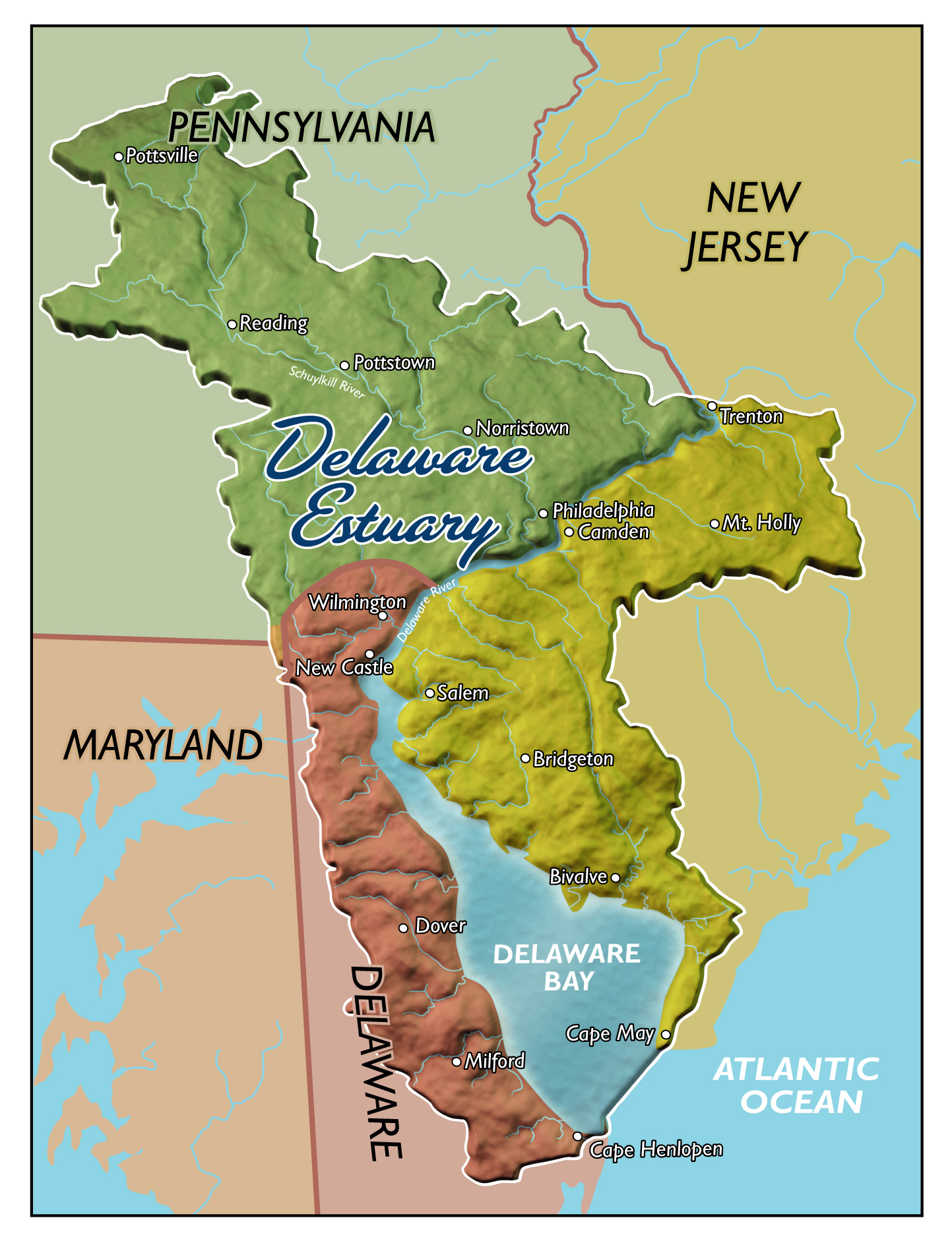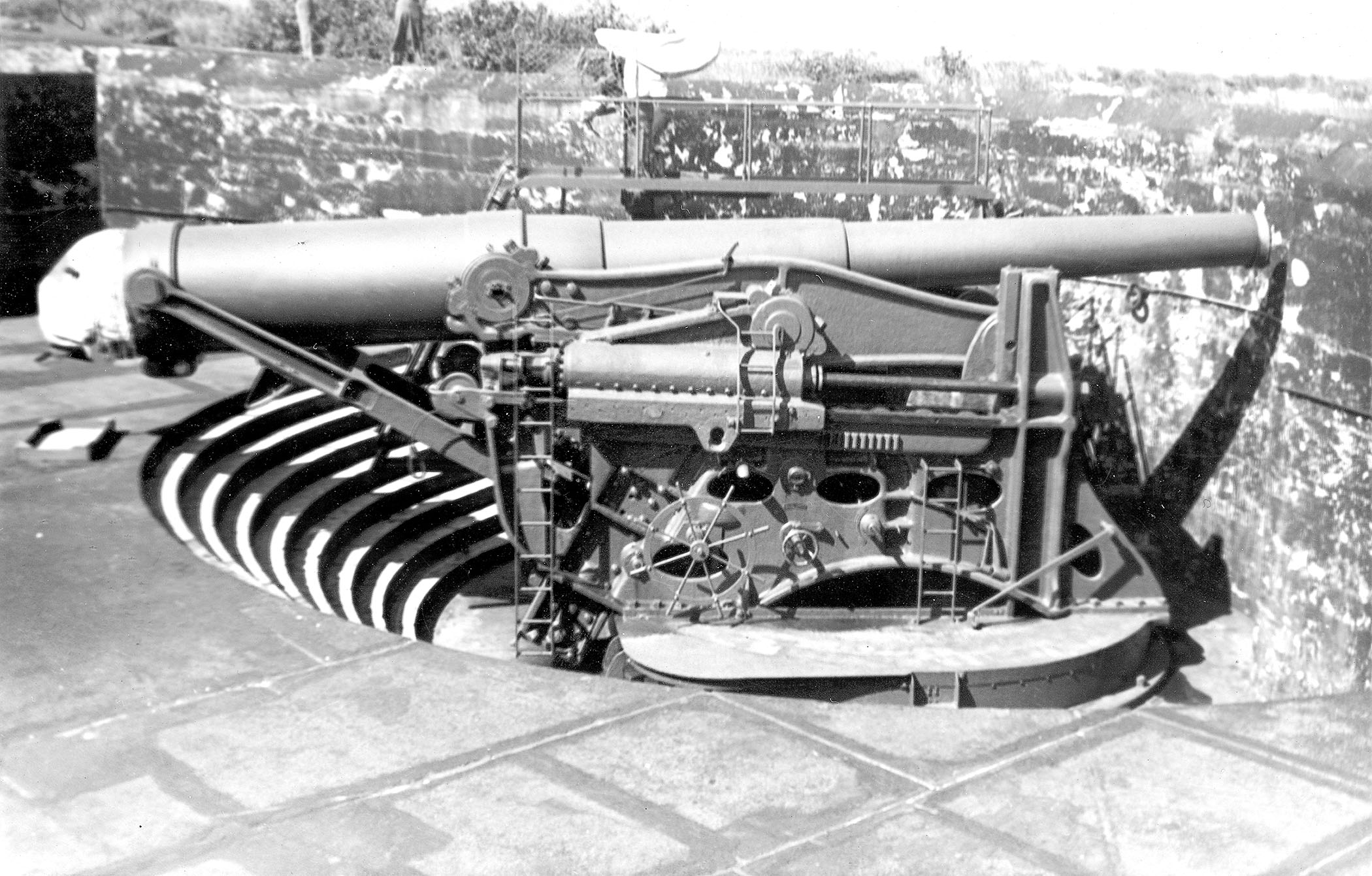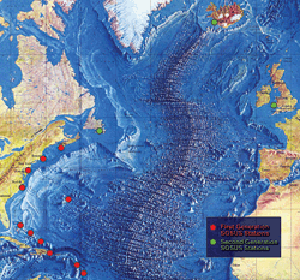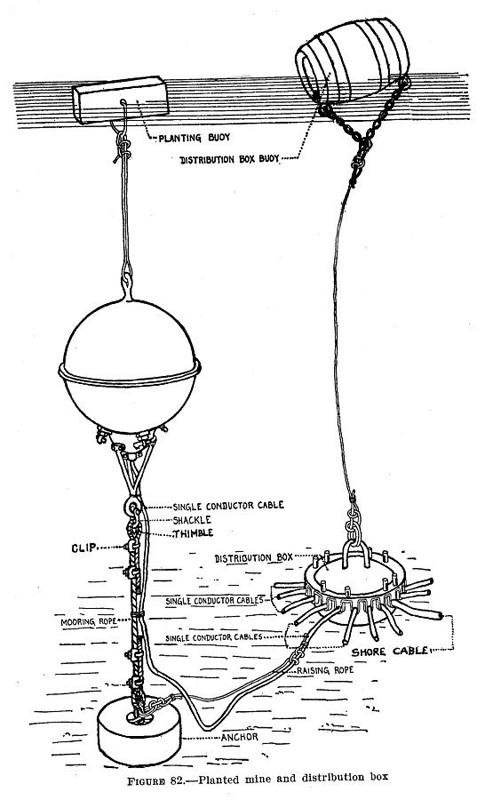|
Fort Miles
Fort Miles was a United States Army World War II installation located on Cape Henlopen near Lewes, Delaware. Although funds to build the fort were approved in 1934, it was 1938 before construction began on the fort. On 3 June 1941 it was named for Lieutenant General Nelson A. Miles. As the primary fort of the Harbor Defenses of the Delaware, it was built to defend Delaware Bay and the Delaware River and to protect domestic shipping from enemy fire between Cape May and Cape Henlopen, particularly from the German surface fleet. The fort also operated a controlled underwater minefield to prevent ships entering the Delaware River estuary. One of these mines was revealed following 2016 Hurricane Hermine by local Cape Henlopen state park staff. The sea mine and anchor were archaeologically conserved. By 1950 the Army's coast defense role had been transferred to the Navy and coastal artillery defenses were obsolete with the fort becoming surplus. The Army continued to use portions ... [...More Info...] [...Related Items...] OR: [Wikipedia] [Google] [Baidu] |
Harbor Defenses Of The Delaware
The Harbor Defenses of the Delaware was a United States Army Coast Artillery Corps Harbor Defense Command, harbor defense command. It coordinated the coastal defence and fortification, coast defenses of the Delaware River estuary from 1897 to 1950, beginning with the Board of Fortifications, Endicott program. These included both coastal artillery, coast artillery forts and Submarine mines in United States harbor defense, underwater minefields. The areas protected included the cities of Philadelphia, Camden, New Jersey, Camden, and Wilmington, Delaware, Wilmington along with the Chesapeake & Delaware Canal. The command originated circa 1896 as an Artillery District and became the Coast Defenses of the Delaware in 1913, with defenses initially at and near Fort Delaware on Pea Patch Island near Delaware City, Delaware, Delaware City. In 1925 the command was renamed as a Harbor Defense Command. During World War II the defenses were relocated to Fort Miles on Cape Henlopen at the mouth ... [...More Info...] [...Related Items...] OR: [Wikipedia] [Google] [Baidu] |
Nelson A
Nelson may refer to: Arts and entertainment * ''Nelson'' (1918 film), a historical film directed by Maurice Elvey * ''Nelson'' (1926 film), a historical film directed by Walter Summers * ''Nelson'' (opera), an opera by Lennox Berkeley to a libretto by Alan Pryce-Jones * Nelson (band), an American rock band * ''Nelson'', a 2010 album by Paolo Conte People * Nelson (surname), including a list of people with the name * Nelson (given name), including a list of people with the name * Horatio Nelson, 1st Viscount Nelson (1758–1805), British admiral * Nelson Mandela, the first black South African president Fictional characters * Alice Nelson, the housekeeper on the TV series ''The Brady Bunch'' * Dave Nelson, a main character on the TV series ''NewsRadio'' * Emma Nelson, on the TV series ''Degrassi: The Next Generation'' * Foggy Nelson, law partner of Matt Murdock in the Marvel Comic Universe * Greg Nelson, on the American soap opera ''All My Children'' * Harriman Nelson, on the ... [...More Info...] [...Related Items...] OR: [Wikipedia] [Google] [Baidu] |
Fall Of France
The Battle of France (french: bataille de France) (10 May – 25 June 1940), also known as the Western Campaign ('), the French Campaign (german: Frankreichfeldzug, ) and the Fall of France, was the German invasion of France during the Second World War. On 3 September 1939, France declared war on Germany following the German invasion of Poland. In early September 1939, France began the limited Saar Offensive and by mid-October had withdrawn to their start lines. German armies invaded Belgium, Luxembourg and the Netherlands on 10 May 1940. Italy entered the war on 10 June 1940 and attempted an invasion of France. France and the Low Countries were conquered, ending land operations on the Western Front until the Normandy landings on 6 June 1944. In ''Fall Gelb'' ("Case Yellow"), German armoured units made a surprise push through the Ardennes and then along the Somme valley, cutting off and surrounding the Allied units that had advanced into Belgium to meet the German armies there ... [...More Info...] [...Related Items...] OR: [Wikipedia] [Google] [Baidu] |
Delaware City, DE
Delaware City is a city in New Castle County, Delaware, United States. The population was 1,695 at the 2010 census. It is a small port town on the eastern terminus of the Chesapeake and Delaware Canal and is the location of the Forts Ferry Crossing to Fort Delaware on Pea Patch Island. History The Delaware City Historic District, Chelsea, Eastern Lock of the Chesapeake and Delaware Canal, Fairview, and Fort Delaware on Pea Patch Island are listed on the National Register of Historic Places. Geography Delaware City is located at (39.5778901, –75.5888150). According to the United States Census Bureau, the city has a total area of , of which is land and (6.01%) is water. Economy Delaware City is close to the Delaware City Oil Refinery belonging to PBF Energy. Infrastructure Transportation Delaware Route 9 serves as the main road through Delaware City, passing southeast–northwest through the city on 5th Street. South of Delaware City, DE 9 passes over the Chesapea ... [...More Info...] [...Related Items...] OR: [Wikipedia] [Google] [Baidu] |
Fort Delaware
Fort Delaware is a former harbor defense facility, designed by chief engineer Joseph Gilbert Totten and located on Pea Patch Island in the Delaware River.Dobbs, Kelli W., et al. During the American Civil War, the Union used Fort Delaware as a prison for Confederate prisoners of war, political prisoners, federal convicts, and privateer officers. A three-gun concrete battery of 12-inch guns, later named Battery Torbert, was designed by Maj. Charles W. Raymond and built inside the fort in the 1890s. By 1900, the fort was part of a three fort concept, the first forts of the Coast Defenses of the Delaware, working closely with Fort Mott in Pennsville, New Jersey, and Fort DuPont in Delaware City, Delaware. The fort and the island currently belong to the Delaware Department of Natural Resources and Environmental Control (DNREC) and encompass a living history museum, located in Fort Delaware State Park. Background In 1794, the French military engineer Pierre Charles L’Enf ... [...More Info...] [...Related Items...] OR: [Wikipedia] [Google] [Baidu] |
12-inch Gun M1895
The 12-inch coastal defense gun M1895 (305 mm) and its variants the M1888 and M1900 were large coastal artillery pieces installed to defend major American seaports between 1895 and 1945. For most of their history they were operated by the United States Army Coast Artillery Corps. Most were installed on Disappearing gun, disappearing carriages, with early installations on low-angle barbette mountings. From 1919, 19 long-range two-gun batteries were built using the M1895 on an M1917 long-range barbette carriage. Almost all of the weapons not in the Philippines were scrapped during and after World War II. History In 1885, William Crowninshield Endicott, William C. Endicott, President of the United States, President Grover Cleveland's secretary of war, was tasked with creating the Board of Fortifications to review seacoast defenses. The findings of the board illustrated a grim picture of existing defenses, and in its 1886 report recommended a massive $127 million construction progr ... [...More Info...] [...Related Items...] OR: [Wikipedia] [Google] [Baidu] |
Slaughter Beach, Delaware
Slaughter Beach is a town in Sussex County, Delaware, United States, located on the southwest shore of Delaware Bay. The population was 207 at the 2010 census, an increase of 4.5% over the past decade. It is part of the Salisbury, Maryland-Delaware Metropolitan Statistical Area. History Slaughter Beach was founded in 1681 and incorporated in 1931. There are at least three stories of where the town's name came from: The first is that it was named after William Slaughter, a local postmaster in the mid-19th century. The second story claims “the name came from the horseshoe crabs that wash up on shore and die each year. They come near shore to shallow water to lay their eggs and the low tide strands them leaving them to die, thus the "slaughter."" The third story, and the most contested source of the town's name, stems from a local legend which tells of a man named Brabant who, in the mid-18th century, "slaughtered" several indigenous inhabitants by cannon in order to prevent an i ... [...More Info...] [...Related Items...] OR: [Wikipedia] [Google] [Baidu] |
Fort Saulsbury
Fort Saulsbury was a United States Army coastal defense fort near Slaughter Beach and Milford, Delaware. From 1924 to 1943 it was the primary heavy gun defense in the Harbor Defenses of the Delaware. In 1943 it was itself superseded by the longer-range 16-inch guns of Fort Miles at Cape Henlopen, Delaware, to which two of Fort Saulsbury's four guns were relocated. Fort Saulsbury was named for Willard Saulsbury Sr., a former US Senator from Delaware. History The United States' massive Endicott and Taft Programs of coast defense construction were no sooner complete than they faced an increasing threat. By 1915 the new forts were almost entirely finished, but the rapid development of dreadnought battleships threatened to outclass them. One problem was that the disappearing carriages most of the heavy guns were mounted on limited their elevation to 10 or 15 degrees and hence their range. A new M1917 high-angle barbette carriage was designed with a maximum elevation of 35 degrees, ... [...More Info...] [...Related Items...] OR: [Wikipedia] [Google] [Baidu] |
Cape May Military Reservation
Cape May Point State Park is a state park located in Lower Township, New Jersey, with a Cape May Point postal address. The park offers walking, hiking and nature trails as well as beaches, an exhibit gallery, a ranger office and is the site of the Cape May Light. The park is operated and maintained by the New Jersey Division of Parks and Forestry. Birding Cape May Point State Park is considered to be one of the best places in North America to view the Fall bird migration to the south. Because of this, birding is one of the most prominent activities conducted at the park. Every fall, visitors converge from across the country to witness the migration of most types of North American migratory birds in great numbers. Every year the a hawk watch is also held, in which the numbers of various types of migratory birds of prey are counted during a several month period. Birds can be seen in the Park at three areas. These are the hawk watching platform (for hawks), the nature and hiking ... [...More Info...] [...Related Items...] OR: [Wikipedia] [Google] [Baidu] |
SOSUS
The Sound Surveillance System (SOSUS) was a submarine detection system based on passive sonar developed by the United States Navy to track Soviet submarines. The system's true nature was classified with the name and acronym SOSUS themselves classified. The unclassified name ''Project Caesar'' was used to cover the installation of the system and a cover story developed regarding the shore stations, identified only as a Naval Facility (NAVFAC), being for oceanographic research. In 1985, as the fixed bottom arrays were supplemented by the mobile Surveillance Towed Array Sensor System (SURTASS) and other new systems were coming on line, the name itself changed to Integrated Undersea Surveillance System (IUSS). The commands and personnel were covered by the "oceanographic" term until 1991 when the mission was declassified. As a result, the commands, Oceanographic System Atlantic and Oceanographic System Pacific became Undersea Surveillance Atlantic and Undersea Surveillance Pacific, and ... [...More Info...] [...Related Items...] OR: [Wikipedia] [Google] [Baidu] |
Estuary
An estuary is a partially enclosed coastal body of brackish water with one or more rivers or streams flowing into it, and with a free connection to the open sea. Estuaries form a transition zone between river environments and maritime environments and are an example of an ecotone. Estuaries are subject both to marine influences such as tides, waves, and the influx of saline water, and to fluvial influences such as flows of freshwater and sediment. The mixing of seawater and freshwater provides high levels of nutrients both in the water column and in sediment, making estuaries among the most productive natural habitats in the world. Most existing estuaries formed during the Holocene epoch with the flooding of river-eroded or glacially scoured valleys when the sea level began to rise about 10,000–12,000 years ago. Estuaries are typically classified according to their geomorphological features or to water-circulation patterns. They can have many different names, such as bays, ... [...More Info...] [...Related Items...] OR: [Wikipedia] [Google] [Baidu] |
Submarine Mines In United States Harbor Defense
The modern era of defending American harbors with controlled mines or submarine mines (originally referred to as "torpedoes") began in the post-Civil War period, and was a major part of US harbor defenses from circa 1900 to 1947. Brief history In 1866, the United States Army Corps of Engineers established the Engineer School of Application at Willets Point, New York. The first commander of this school, Major Henry Larcom Abbot, was almost single-handedly responsible for designing and supervising the program of research and development that defined the strategy and tactics for the mine defense of American harbors. Abbot experimented with underwater explosives, fuzes, cabling, and electrical equipment for over a decade before publishing the first manuals on the use of mines in coast defense in 1876–77. At least one experimental controlled minefield was emplaced at this time, at Fort Mifflin in Pennsylvania. However, funding of the fortification program of the 1870s was cancell ... [...More Info...] [...Related Items...] OR: [Wikipedia] [Google] [Baidu] |







